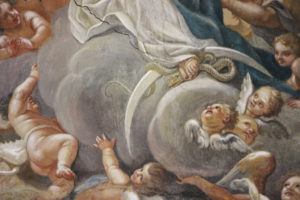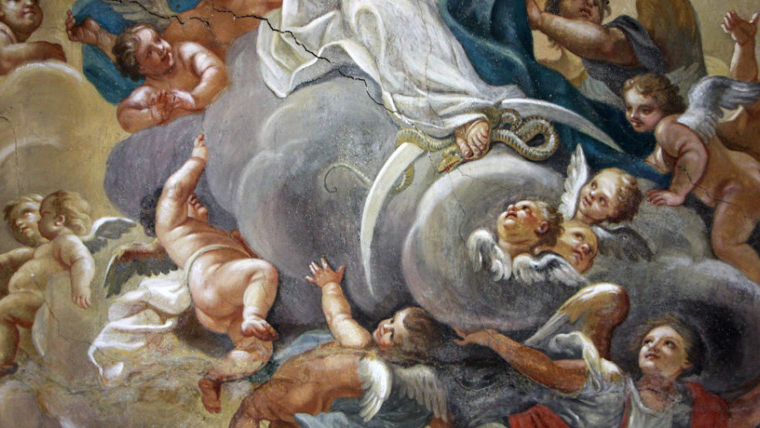 Et luna sub pedibus eius. Apoc. XII – The moon under her feet
Et luna sub pedibus eius. Apoc. XII – The moon under her feet
Continuing the version described to us by St. John, the immaculate woman is shown to us with the moon under her feet: et luna sub pedibus ejus. The moon is a symbol of the mutability of men and things. Then the Wise Man warned that the foolish changed as the moon does: stultus ut luna mutatur. This part of the picture of Patmos can declare to us the prerogative that arose in Mary in her conception to go forward, indeed, exempted from the stimulus of evil. Because of the fact of this stimulus, we must recognise that submissiveness to evil, and that reluctance to do good, that render the innocence and the virtue of our hearts not very stable and lasting.
GO ON READING
Follow in PDF all of the text
From I Gigli di Maria, a Neapolitan periodical. Year III 1866
Fr. AGOSTINO LANA (Camillian)
He was born in Rome on 23 May 1821. From a profoundly Christian family, he was brought up according to the precepts of divine love. He entered the Order of the Ministers of the Sick in 1841. He was ordained a priest in 1845. A true Minister of the Sick, we find him working in isolation hospitals and at the side of the dying. He was a Provincial Prefect and a member of the General Consulta. A member of the Academy of the Arcadi with the name of Filete Eereo, for about thirty years he was an assiduous and conscientious member of the consulta of the Sacred Congregation of Rites. A profound theologian, he was markedly expert in sacred and profane history and Christian archaeology. He died in the House of San Giovanni della Malva in Rome on 22 October 1901.
He stood out for his devotion to the Most Holy Virgin. Many of his writings were published in the periodical of Naples, I Gigli di Maria, to which he was a valuable contributor.
On 20 December 1845 he was consecrated a priest.















Camillians on Facebook
Camillians on Twitter
Camillians on Instagram